Few herbs spark as much passion—or debate—as cilantro. Known for its bright, citrusy flavor and vibrant green leaves, cilantro is a staple in many American kitchens, especially those that celebrate Mexican, Southwestern, and Asian-inspired cuisines.
From zesty salsa and guacamole to taco toppings and curries, cilantro adds a burst of freshness that can transform an ordinary dish into something extraordinary. Loved by many for its unique taste (and admittedly disliked by a few due to a genetic sensitivity), cilantro remains one of the most distinctive and essential herbs in American cooking.
In this article, we’ll explore the fascinating story behind cilantro—its history, nutritional benefits, growing tips, culinary uses, and why it deserves a permanent place in your garden and pantry.
What Is Cilantro?
Cilantro (Coriandrum sativum) is the leafy part of the coriander plant, belonging to the parsley family. Interestingly, the plant serves a dual purpose: the leaves and stems are known as cilantro, while the seeds are called coriander.
Cilantro has a fresh, lemony, and slightly peppery taste that enhances salsas, salads, soups, and marinades. Its aroma is instantly recognizable—a hallmark of Latin American and Asian cooking traditions.
The History of Cilantro
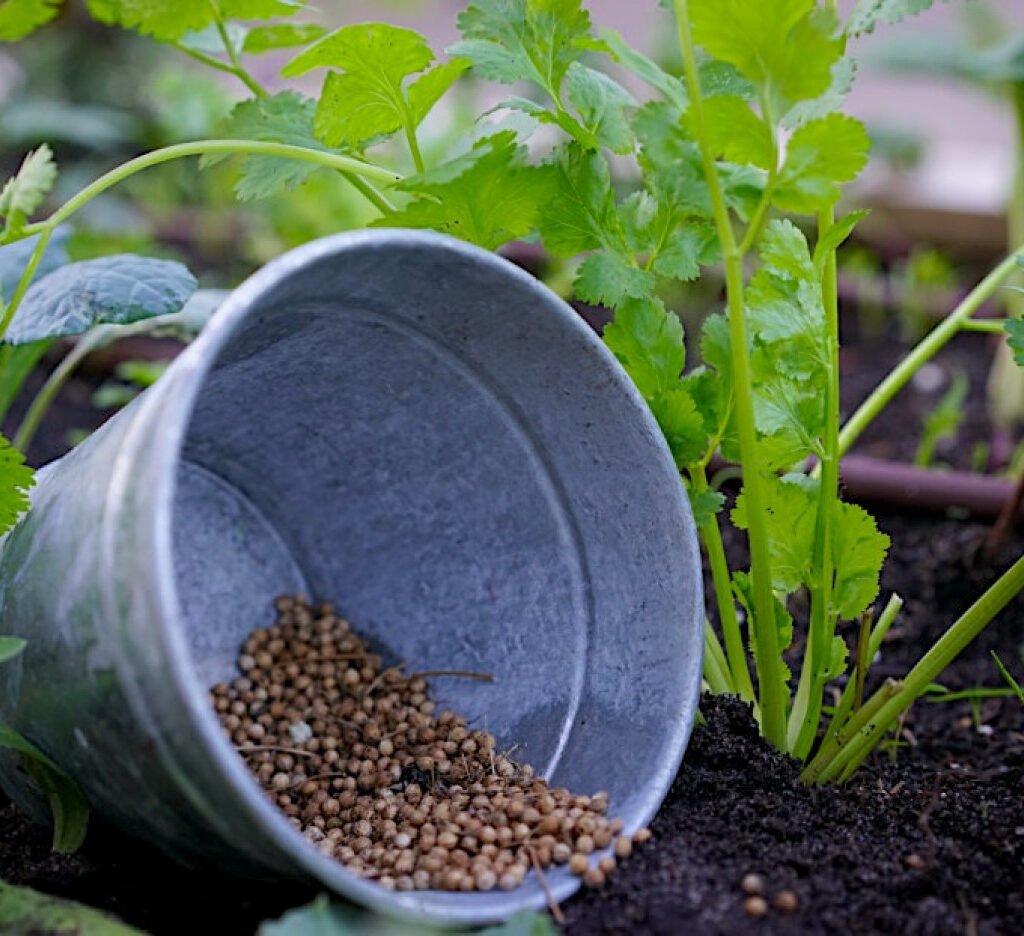
Cilantro’s story dates back thousands of years. It originated in the Mediterranean and Middle East and spread through trade routes to Asia, Africa, and Europe. When Spanish explorers arrived in the Americas, they brought cilantro with them, and it quickly became a staple in Mexican, Caribbean, and Latin American cuisines.
Today, cilantro thrives in American kitchens and gardens across the country—from California’s taco trucks to Texas barbecue tables and New York fusion restaurants. It’s the go-to herb for freshness, brightness, and bold flavor in countless American dishes.
Nutritional and Health Benefits of Cilantro
Cilantro isn’t just delicious—it’s a nutritional powerhouse packed with vitamins, antioxidants, and natural compounds that support overall health.
Here’s what makes cilantro so beneficial:
1. Rich in Vitamins and Minerals
Cilantro is loaded with vitamins A, C, and K, which support eye health, immunity, and strong bones. It also provides small amounts of potassium, calcium, magnesium, and folate.
2. Detoxifies the Body
Cilantro helps the body eliminate heavy metals like mercury and lead. Its natural compounds bind to these toxins, supporting liver health and detoxification.
3. Supports Heart Health
Cilantro may help lower bad cholesterol (LDL) and increase good cholesterol (HDL), making it a heart-friendly herb for your daily diet.
4. Improves Digestion
Cilantro aids digestion, reduces bloating, and helps calm the stomach after spicy or rich foods.
5. Fights Inflammation and Free Radicals
Thanks to its antioxidants and anti-inflammatory properties, cilantro helps fight oxidative stress and supports the body’s defense system.
6. Natural Antibacterial Power
Cilantro has antimicrobial effects that help fight bacteria and prevent foodborne illnesses—a reason why it’s often paired with fresh salads and raw dishes.
Growing Cilantro in Your American Garden
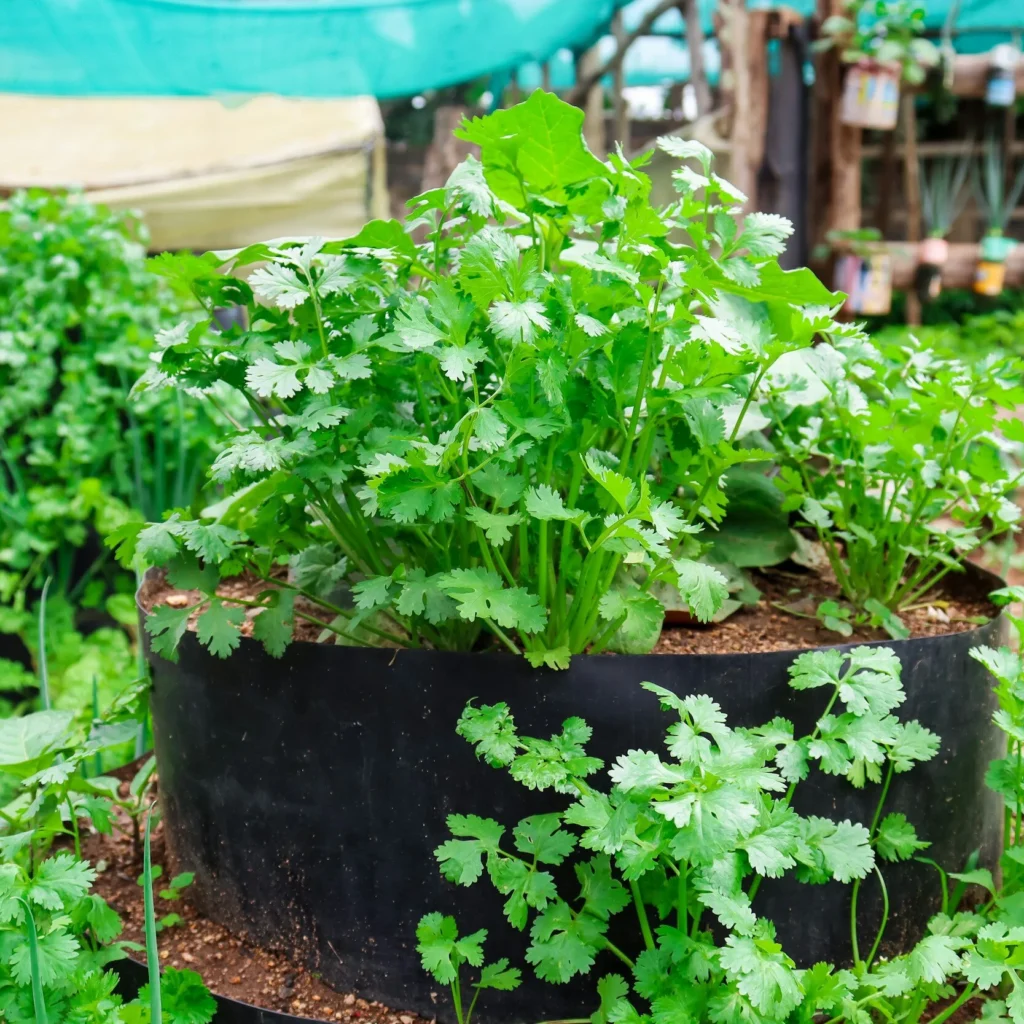
Cilantro is one of the easiest herbs to grow in the U.S. Whether you have a backyard garden or just a sunny windowsill, this herb grows well in most climates.
Here’s how to cultivate lush, fragrant cilantro at home:
1. Choose the Right Spot
Cilantro loves full sun to partial shade. In hotter regions like the South and Southwest, partial shade helps prevent the plant from bolting (going to seed too early).
2. Planting Tips
- Sow seeds directly into the soil about ¼ inch deep.
- Keep the soil moist but well-drained.
- Space plants about 6–8 inches apart for healthy growth.
3. Watering and Soil Needs
Cilantro prefers loamy, slightly acidic soil (pH 6.2–6.8). Water regularly, but don’t overwater—the roots should stay moist, not soggy.
4. Harvesting Cilantro
You can start harvesting once the leaves reach 3–4 inches long. Always pick from the outer leaves first, leaving the center to continue growing.
5. Preventing Bolting
Cilantro tends to bolt in warm weather. To prolong your harvest:
- Plant new seeds every 2–3 weeks.
- Use mulch to keep the soil cool.
- Choose slow-bolt varieties if you live in a warm climate.
6. Cilantro Companion Plants
Cilantro grows well alongside tomatoes, peppers, onions, and spinach, helping to repel pests like aphids and spider mites naturally.
Storing and Preserving Cilantro
Cilantro is best used fresh, but you can store or preserve it to make it last longer:
- Refrigerate: Trim the stems, place them in a glass of water, cover loosely with a plastic bag, and store in the fridge. Change the water every 2–3 days.
- Freeze: Chop cilantro and freeze in ice cube trays with olive oil or water.
- Dry: Although dried cilantro loses some flavor, you can dry it for soups or stews where freshness is less crucial.
Culinary Uses: How Cilantro Elevates American Dishes
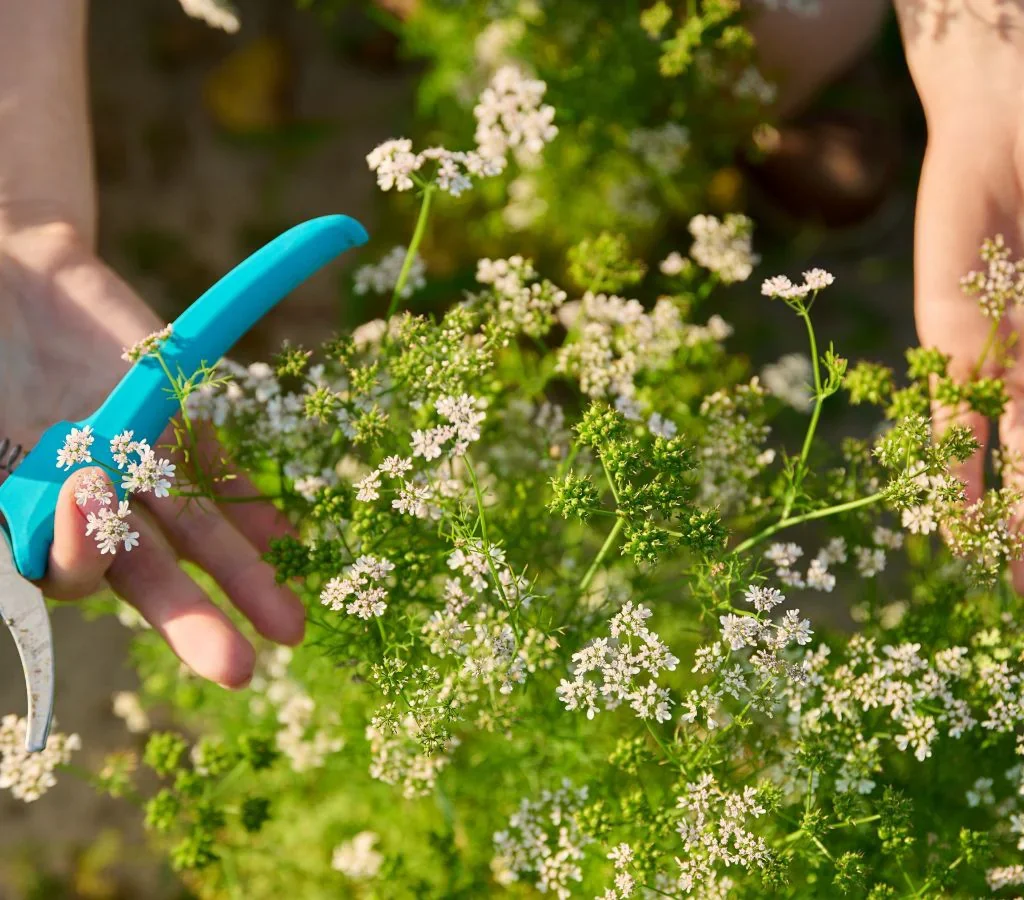
Cilantro’s fresh, citrusy flavor makes it one of the most versatile herbs in modern American cuisine. It brings brightness to heavy dishes, complements spice, and adds a burst of green to any meal.
Here are some of the most popular ways Americans enjoy cilantro:
1. Classic Fresh Salsa
A staple at every taco night or summer BBQ, salsa gets its signature freshness from cilantro.
Ingredients:
- 2 tomatoes (diced)
- ½ onion (chopped)
- 1 jalapeño (minced)
- Juice of 1 lime
- ¼ cup fresh cilantro (chopped)
- Salt to taste
Directions:
Mix everything together, chill for 15 minutes, and serve with tortilla chips or grilled meats.
2. Homemade Guacamole
Cilantro is essential for the best guacamole—adding flavor and freshness that balances avocado’s creaminess.
Ingredients:
- 2 ripe avocados
- 1 small onion, diced
- 1 tomato, chopped
- ¼ cup cilantro, chopped
- 1 lime (juice)
- Salt and pepper to taste
Mash avocados, mix in the rest, and enjoy with tacos, nachos, or as a sandwich spread.
3. Cilantro-Lime Rice
Perfect as a side for burritos, grilled chicken, or seafood.
Ingredients:
- 2 cups cooked rice
- 1 lime (zest and juice)
- 2 tbsp olive oil
- ¼ cup chopped cilantro
- Salt to taste
Toss together for a zesty, aromatic side dish.
4. Cilantro Chimichurri Sauce
A fresh twist on the classic Argentinian sauce—great for steaks or roasted vegetables.
Blend cilantro, garlic, olive oil, vinegar, and chili flakes until smooth.
5. Cilantro-Lime Dressing
A refreshing salad dressing or drizzle for grilled meats.
Blend cilantro, Greek yogurt, lime juice, honey, and olive oil for a creamy, tangy dressing that pairs beautifully with summer salads.
6. Cilantro Smoothies
Add a handful of cilantro to green smoothies for a detoxifying boost. Combine with pineapple, apple, and cucumber for a refreshing morning drink.
Cilantro in American Cuisine Today
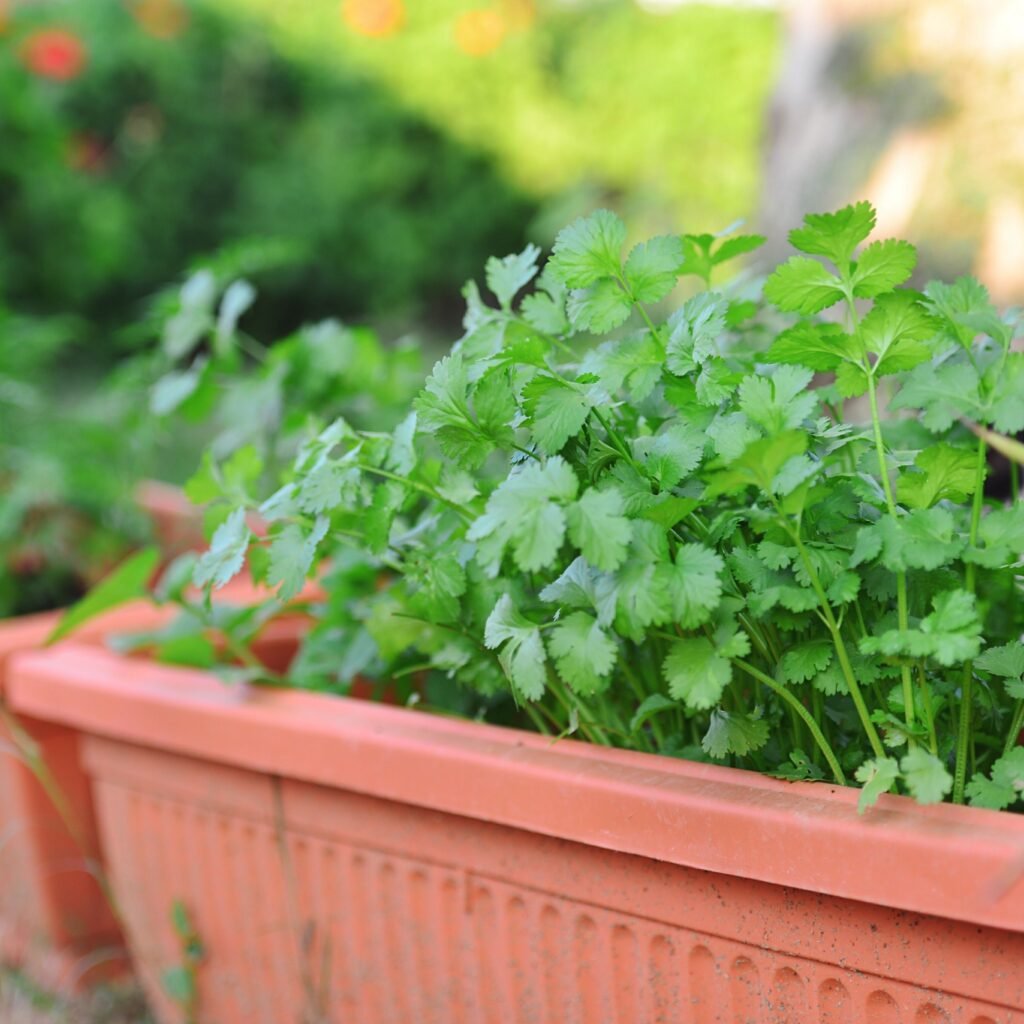
Across the U.S., cilantro is more than just an herb—it’s a symbol of freshness and fusion. With America’s love for Mexican, Thai, and Indian flavors, cilantro has earned a top spot in both home kitchens and restaurant menus.
You’ll find cilantro in:
- Tex-Mex tacos and burrito bowls
- Asian noodle soups and spring rolls
- California-style salads and poke bowls
- Southern BBQ marinades and dressings
Its versatility makes it an essential ingredient for home cooks looking to experiment with global flavors right in their American kitchens.
Fun Facts About Cilantro
- Cilantro and coriander come from the same plant—cilantro is the leaves, coriander is the seed.
- About 10% of people perceive cilantro as tasting like soap due to a genetic trait affecting smell receptors.
- Cilantro is mentioned in the Old Testament and was found in ancient Egyptian tombs.
- In the U.S., California and Arizona are leading producers of fresh cilantro.
Tips for Cooking with Cilantro
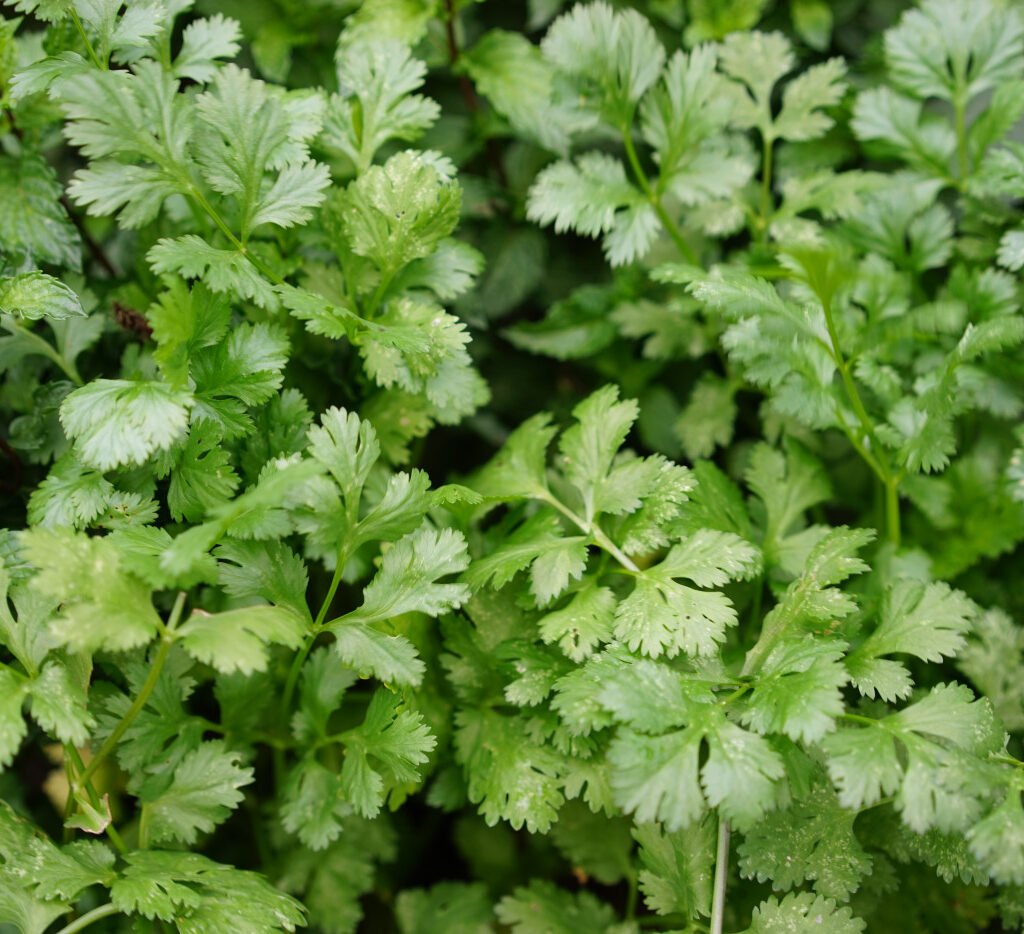
- Use it fresh and at the end of cooking – Heat destroys its delicate flavor, so add it just before serving.
- Chop gently – Avoid bruising the leaves to preserve aroma and color.
- Pair with citrus – Lime or lemon enhances cilantro’s natural brightness.
- Don’t discard the stems – They’re full of flavor and can be chopped into sauces and salsas.
Conclusion
Cilantro is more than an herb—it’s a burst of life and flavor that brings freshness to every dish it touches. From zesty guacamole to fragrant curries and tangy salads, cilantro continues to shape modern American cooking with its global roots and versatile taste.
It’s easy to grow, rich in nutrients, and endlessly adaptable—making it a must-have in every home garden and kitchen. Whether you’re preparing a family taco night, experimenting with international cuisine, or simply adding a touch of green to your meals, cilantro proves that freshness is always in style.
So, next time you reach for herbs, let cilantro take center stage—it’s the little green leaf that makes every dish come alive.
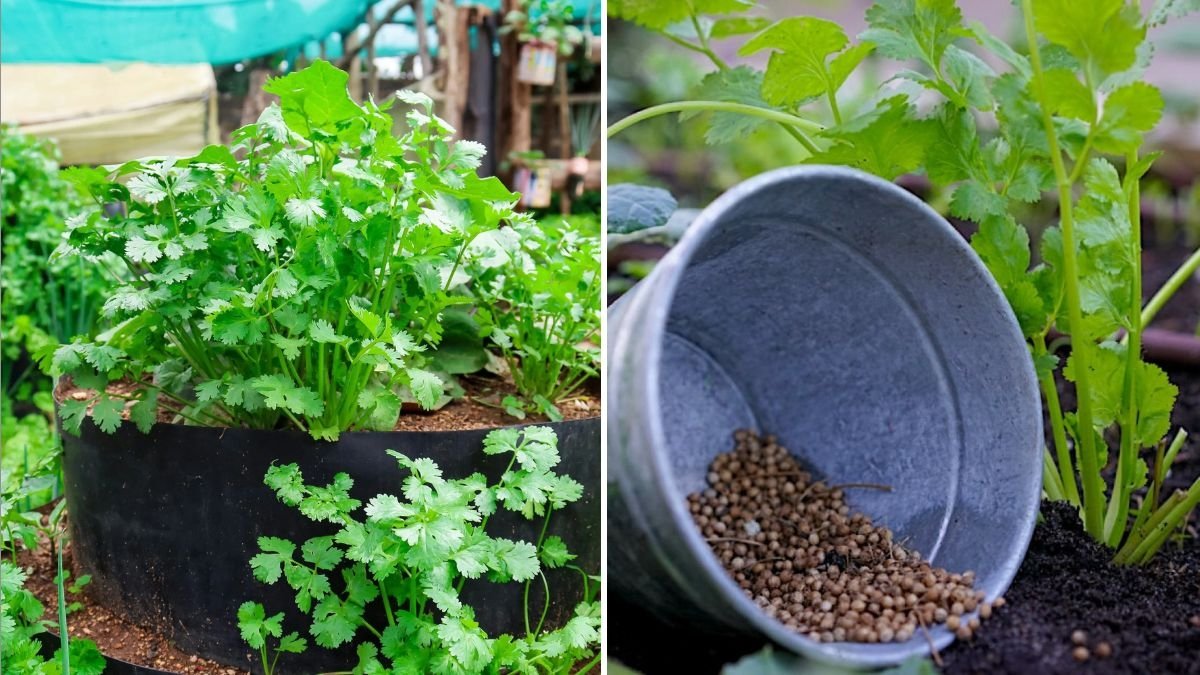



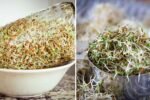

Leave A Comment